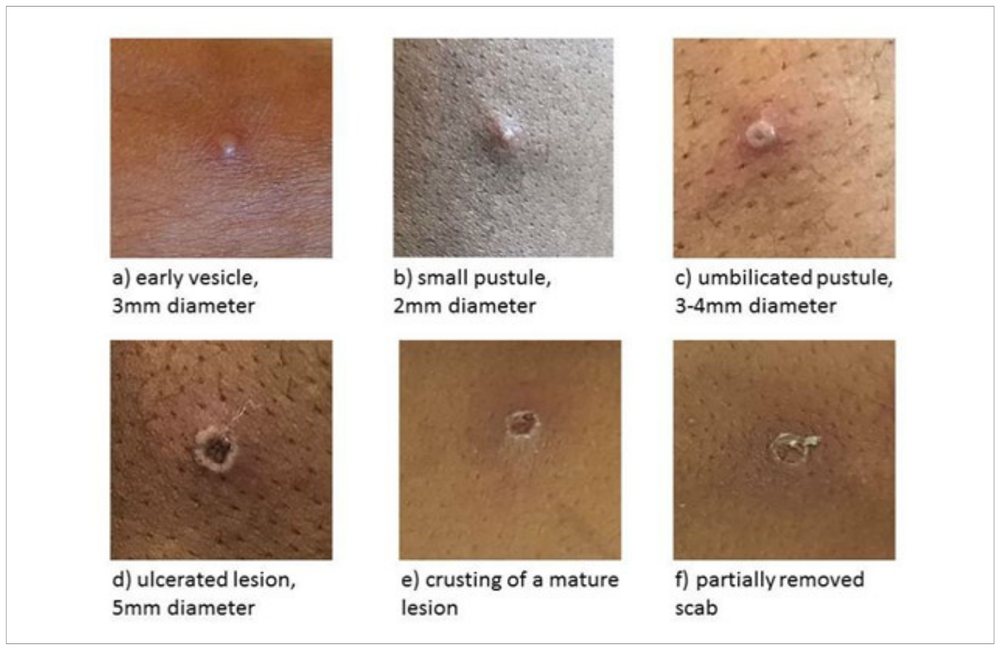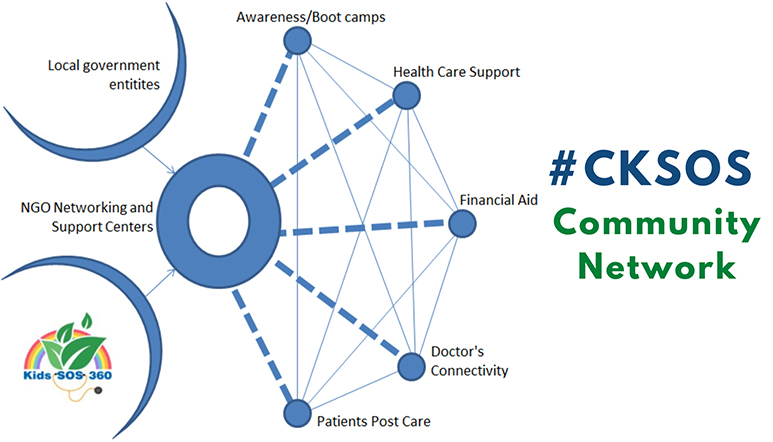- Contact Number : +91-81695 11577
- Email-Id : info@cancerkidssos.org

Monkey Pox
About Monkey Pox
What is Monkeypox?
Monkeypox (MPX) is a rare infection caused by the Monkey pox virus (MPXV). The virus belongs to the Orthopox virus family - this family also includes smallpox and other viruses. This virus is also known as zoonotic because it can be spread from animals to humans and from humans to animals. It spreads through body fluids, physical contact and respiratory droplets. Symptoms are similar to those seen in the past in smallpox patients, though clinically less severe.
How and where did monkeypox start?
Monkeypox was first found in an outbreak in monkeys used for research that were being shipped from Singapore to Denmark in 1958. This is why it is called monkeypox. The first confirmed case of a human contracting monkeypox was in a child in the Democratic Republic of Congo (DRC) in 1970. It was first thought that this child had smallpox as the symptoms were so similar. Since then, there have been a few outbreaks of the virus but mainly in African countries. Most outbreaks have been in DRC and Nigeria.
Till recently it was rare to have outbreaks outside Africa. For past few months it has been increasingly appearing in urban areas in central and west Africa near Rain Forest areas and is also being reported in people who have some travel history to these regions.
Recently, few cases without significant travel or contact history have also been reported from different parts of world and efforts are on to know the causes.
Why are there more cases of monkeypox now?
Over 50 years ago, everyone was offered the smallpox vaccine in a huge drive to get rid of small pox. This vaccine also helped in reducing the infections of monkeypox as both viruses are similar and by 1980 Small pox was declared as eradicated by WHO.
Over time, people have stopped being vaccinated against smallpox as the virus no longer exists. As a consequence, young people, mainly children and maximum of those born after 1980 have not received the smallpox vaccine and they constitute 80%- 96% of population in different part of world. This population is now at higher risk of catching monkeypox if comes into close contact with an animal or person who has it. Although the vaccinated population has some immunity to MPXV, protection may have waned over time, and there is still a risk of infection. Historically, vaccination against smallpox was shown to be 85% effective in preventing MPXV and the case fatality rate of people who are unvaccinated against small pox is 9.8%.
Susceptible Population:
The pediatric population (<8 years), elderly and the immuno-compromised population (like people receiving high dose corticosteroids, people with cancer, receiving chemotherapy, or post organ or stem cell transplant and those receiving radiation therapy or immunosuppressive treatment for any reason) are at higher risk.
How is monkeypox transmitted?
Monkeypox is not very infectious and does not spread easily between people. It usually spread from close contact with infected animals either from bites or scratches from animals. It can enter the body through broken skin (even if you cannot see it) or through the nose, eyes or mouth.
Ways it can spread:
-
An infected person who coughs or sneezes directly on to you.
-
The monkeypox rash.
-
Fluids from the body of an infected person - during sexual or close skin-to-skin contact.
-
Clothes, towels and bed linen that people with the illness have used.
What does monkeypox look like?
Monkeypox can sometimes be confused with chickenpox. The rash looks very similar to chickenpox, especially in the early stages. However, the chickenpox-like blisters filled with clear fluid later become filled with cloudy yellow-white liquid.
-
Rash starts as flat spots that become raised.
-
Later fill with clear liquid to become blisters.
-
Clear fluid turns cloudy, like pus.
-
Followed by crusting
-
Form scabs which later fall off.
The rash usually starts on the face and can be in the mouth. It can then spread anywhere from the top of your head to the bottom of your feet including genitals.
This rash can last for about 10 days.
What are the symptoms of monkeypox?
Once you catch monkeypox, you feel normal for few days before the symptoms start. This is called the incubation period. In monkeypox, this is usually between 7 to 14 days but in some people it could be between 5 and 21 days.
After this, mild symptoms can occur. Monkeypox symptoms include:
-
Fever (Often >38.5°C), intense
-
Muscle aches and pains.
-
Swollen lymph nodes in neck, armpits and groin.
-
Exhaustion.
-
Rashes: appear after about 3 days of fever, starting on the face spreading to other parts of the body. The person is infectious until the scabs have dropped off and the skin underneath looks intact.
From start to finish, monkeypox can last up to four weeks.
Do people recover from monkeypox?
Most people usually get better on their own, after about three weeks but in some, it can take longer - up to four weeks.
Is monkeypox deadly?
The death rate of monkeypox can change depending on the strain of the monkeypox virus. The West African strain can cause 1 death for every 100 people who have the illness. The Congo Basin (central African) strain causes about 1 death in every 10 people who have been infected.
There can be complications that can make people more ill. People with weakened immune systems such as those on chemotherapy can have complications from the illness. They may need treatment in a hospital.
What can be the Complications:
-
Chest infections such as pneumonia.
-
Sepsis (infection into the bloodstream and throughout the body).
-
Encephalitis (infection in the brain).
-
Infection of the eye which can cause loss of vision.
How is monkeypox diagnosed?
Typical Clinical presentation is helpful in diagnosis. To be certain, a sample from the blister of the rash should be sent to a laboratory to be analysed. Here, the monkeypox virus is grown and you can get a firm diagnosis.
How to manage Monkeypox?
For cases and contacts:
-
Immediate isolation
-
Limit use of household items like clothes, bed linen, towels, utensils.
-
Daily monitoring and covering the face with masks and rashes should also be covered.
-
Patients should also be instructed to avoid close or intimate contact with other people until their rash heals completely
-
Advised self-monitoring and monitor fever for at least 21 days after their last exposure.
-
If any symptoms appear during this period, they should self-isolate, except for attending medical assessments or testing.
In general, complete isolation until monkeypox infection is excluded.
Is there any specific treatment for monkeypox?
No specific treatments designed till date. As most people have mild symptoms. Few Antivirals are of theoretical interest as they have been used previously for treatment of monkeypox in animals, but no human data till date.
Immunoglobulins (antibodies)- IVIG- Immunoglobulins are antibodies. These are proteins that are made by the body's immune system to fight infection. We can also make treatments for some diseases by getting these antibodies from a number of people and creating a medicine.
Vaccines used to prevent monkeypox:
USA approved the use of ACAM2000™ and JYNNEOS™ (also known as imvamune or imvanex) vaccines to prevent MPXV. JYNNEOS™ is a live attenuated virus vaccine, which has been approved by the US FDA for some individuals at risk of being exposed to poxvirus. However, ACAM2000™ has serious side effects, and is no longer licensed in the EU. These two vaccines have mainly been used to vaccinate the close contacts of patients diagnosed with monkeypox.
Training of health professionals:
Healthcare workers should be trained to pick up and be able to isolate cases to stop further infection. The aim should be early identification, reporting, diagnosis, and treatment and Isolation. Disinfection measures should also be taken, as MPXV is sensitive to all commonly used disinfectants.
Are there any special precautions cancer patients or other immunocompromised people should take to avoid catching or spreading monkeypox? 
-
Avoid direct contact with anyone who has an unexplained rash. Wash hands frequently, and, if possible, avoid going to countries with a high level of transmission.
-
If the person develops an unexplained rash and feels sick and had close or intimate in-person contact with someone with a similar rash or suspected of having monkeypox, isolate immediately and contact a trained health professional
-
Unless it's an emergency, you should not come directly to the hospital without warning if you believe you may be infectious.

Dr. Amit Kumar
Sr. Consultant Ped. Oncology
Search
Recent Post

Monkey Pox
Category

Click Here To Book An Appointment
Quick Links
Recent Publications Recemt EventsNeed Help For Your Patient
 Refer A Patient
Refer A Patient
 Expert Opinion
Expert Opinion
 Joint Clinic Discussion
Joint Clinic Discussion



 Please wait...
Please wait...